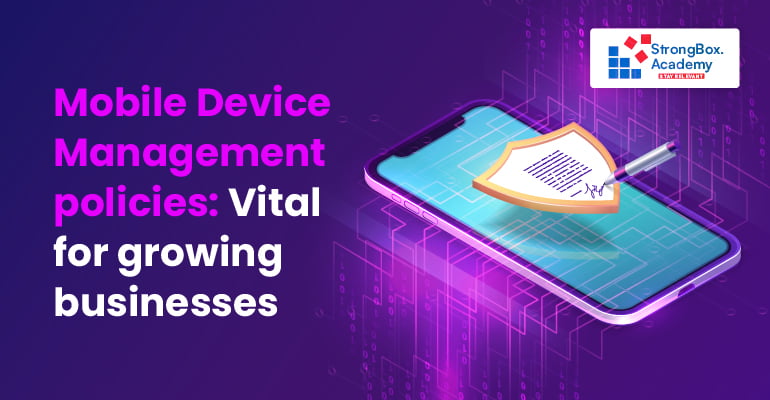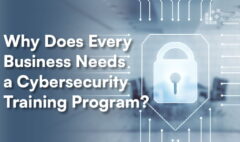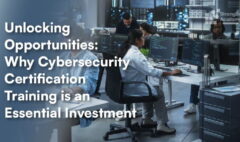Mobile Device Management policies: Vital for growing businesses
June 15, 2023 2023-08-08 14:25Mobile Device Management policies: Vital for growing businesses
Mobile Device Management policies: Vital for growing businesses
What is Mobile Device Management (MDM)?
Mobiles have become an integral part of our life, and businesses also have transitioned to a mobile-first landscape in the last few years. Studies in the past have proven that six out of ten employees in an organization predominantly rely on using mobiles or tablets to perform everyday tasks. On this account, ensuring that these devices used for work functions are secured and protected from outside threat attacks has become vital. Mobile devices are vulnerable to attacks because of their ease of use, convenience, and portability. Using mobiles will expose the network significantly, which will cause a gateway for many cyber threats. This blog will enlighten us on the importance of Mobile Device Management and the criticality of implementing its policies.
Mobile Device Management is managing mobile devices in teams of usage and security. MDM is a required initiative to be implemented to secure mobile and tablet devices used in the workplace. These devices are used to send, receive, and store sensitive data and are exposed to cyber threats. MDM helps combat and prevent data loss outside the corporate network, at rest, in use or in transit. These policies are focused on managing and protecting portable devices. The MDM policies aim to optimize the mobile devices in the workspace actively. This can be accomplished by implementing a combination of best practices and software solutions to empower businesses to securely manage a broad range of devices without compromising corporate compliance.
MDM focuses on the several interrelated components, such as
<ol=type”1″>
- Device and data security
- Device management
- Device software
- Device configurations and services
- Device functionality control
These policies are built to apply a single interface on all devices. This makes it highly potential for threats because the organization’s network is compromised when one is hacked and exploited for data. But on the other hand, MDM helps monitor the devices from afar, managing and controlling them according to the organization’s policies.
Why is MDM vital for businesses?
Statistical reaches have shown that, the number of smartphones lost in a year is 70 million and one laptop is stolen once every 53 seconds. This proves the high risk of data and the urgency to implement proper policies to prevent loss of sensitive organizational data. Though the lost devices might seem simple, any new owner can easily access the data with no hassle. Ensuring the instrumental application of the cybersecurity policies combined with the MDM policies will give organizations better secure control over their office devices.
Vital elements of an MDM solution
Although the MDM solutions are tailored to the specific needs of every business, following their requirements, certain universal elements of the policy are to be followed. They are:
- Application management
- Installation
- Updating
- Managing licenses, permissions, and configurations
- Deletion
IT teams of an organization remotely manage mobile applications, configure policies, blocklists, and whitelist applications. One critical aspect is disseminating enterprise applications through an authentic enterprise application store, providing frequent updates, and managing them through a central interface.
How should applications be supervised in organizations?
- Asset Management: Having a set of rules and regulations to control and monitor the use of the devices, such as what they should be used for, enforcing company policies that are universally applicable to all the instruments, networks, and operating systems in the organization.
- Bandwidth optimization: Making sure that a manageable bandwidth of usage of the devices and applications to have a check on the network’s resources.
- Content Management: Mobile Information Management (MIM) can be a solution created to restrict access to corporate resources on any device. This will make sure only authorized users can only access sensitive corporate data.
- Configure Management: This involves configuring policies to the requirements of business standards and compliance regulations. This can help identify, control, and manage the setting for hardware and software.
- Data security: Ensuring all data is stored, sent, and received according to the organization’s policies and best practices.
- Identify and access management: Filters access according to the appropriate employees, allowing only authorized employees.
- Profile Management: Providing limited control and access to the policy settings to a specific group of end users.
- Risk Management: Securing and defending mobile devices by being vigilant to avoid strange behaviour and cyber threats.
- Software updates: Allowing a business to remotely control software, OS updates, licences, and all work devices.
Benefits of MDM
<ol=type”1″>
- Easy remote management of users and devices
- Improved regulatory compliance
- Better application control
- Increase network security
- Reduce IT requirements
Conclusion
To enhance the security and functionality of work-related mobile devices, a comprehensive MDM policy was crafted to safeguard the corporate network. However, to successfully implement this policy, careful pre-planning, ongoing management, and continuous real-time monitoring is required. This is just one vital component of ensuring robust cybersecurity for your business, protecting it from potential cyber threats.














